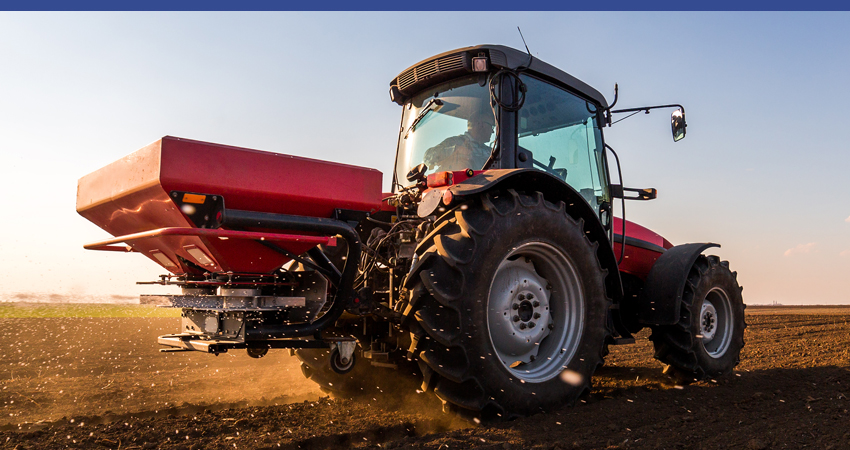Align Fertilizer Conveyor Demands Between Components and Material Composition
The fertilizer industry is a high-stakes business that is seeing a continually increasing value put on its core commodity, while trying to manage increasing production demands.
With fertilizer manufacturers under pressure to ramp up output volumes, this billion-dollar industry is facing a growing strain on existing operations and its equipment.
High-Stakes Fertilizer
With potash at a per-ton cost of $383 as of January 2019, a moderate-sized fertilizer operation that experiences unplanned downtime can easily lose more than $100,000 per hour and potentially incur millions of dollars in lost revenue per day. This puts an enormous amount of pressure on management for fertilizer operations that cannot afford even one hour of downtime – let alone days of idle machinery.
As global industry analysts project growth for the world’s fertilizer market at an annual rate of 14%, with the Compound Annual Growth Rate (GAGR) for the global fertilizer market at approximately 3.8% for the period 2018-2023, the problem facing existing fertilizer operations is not going away.
Reliability at a Premium
Fertilizer operations rely heavily on conveyors to transport materials throughout the facility. The more reliably conveyors can transfer materials from one part of production to another, while avoiding breakdowns, the more positive the impact they can have on the profitability equation facility operators must constantly manage.
Fertilizer manufacturers can easily fall prey to the assumption that there is a one-size-fits-all approach to conveying. Whether it is dry, caustic or wet materials moving through a facility’s conveyor system, each one presents its own challenge. Just as there are myriad properties making up the different fertilizers, there are equally different conveyor designs, build materials and engineering configurations to address those distinct products.
While planned preventative maintenance schedules attempt to minimize the impact of any downtime on production, it is the unplanned interruption in production that can be costly—or even catastrophic—given the high stakes associated with hourly production profits. This is where custom designs prove superior.
Design/Material Alignment
When it comes to the unique properties of different fertilizers, potash fertilizers present an especially difficult challenge. Once mined from the ground, the potassium salts are processed as either rocks, or soaked in water to make a brine, that are processed to separate out the potash and refine it to a more usable form. This “wet form” of potash can be especially hard on a conveyor, as it can accelerate levels of corrosion for conveyor components.
As production schedules continue to push existing equipment to its highest possible production levels, the inevitable breakdowns will occur as wear and tear takes its toll on machinery that is not designed to handle the additional strains being forced upon it.
So, why not design your conveying system based specifically on the material handling needs you must face? Where off-the-shelf solutions fall short, custom designed conveying systems easily provide long-term value by avoiding the pitfalls associated with one-size-fits-all systems that cannot hold up to the increasing demands of a 24/7/365 operation.
If you are moving wet potash, your conveyor should have a trough and chain design capable of coping with the corrosive characteristics and aligned to optimize performance and reliability.
The keys to a successful conveying system rely on matching up the conveyor design with the challenges presented by the materials being handled:
-
- Conveyor success or failure relies on balancing internal components with the application and material being handled.
-
- Utilizing the proper materials of construction for the materials and environment.
-
- Optimizing the operating/design parameters of the conveyor.
-
- Material and environmental data is critical before addressing the components.
Conclusion
From drag chain conveyors and bucket elevators to screw conveyors and feeders and gates, valves and diverters, CDM’s custom conveying system designs are available for any size fertilizer operation. From urea, ammonium sulfate and phosphate, CDM systems can successfully handle any type of fertilizer material. Our equipment offers flexible chain formulas and high-quality construction materials and workmanship to deliver the durability and performance your fertilizer business can count on for years to come.
———
About CDM
The CDM story is about recognizing every industrial operation is different, as are their conveying challenges. A custom-engineered conveying system is a cost-effective approach to any operation willing to look at the value of having a partner who is vested in your success and one who stands by their product. CDM has earned more than 91 percent repeat business because we’re more than just a conveying systems manufacturer – we’re a business partner.
For further information contact:
Andrew Parker, President CDM Systems, Inc.
Browse By Benefit
Categories
- Blog (40)
- Case Studies (9)
- News (7)
- Product Information (7)
- Tech Briefs (3)
- Technical Documents (33)
- Uncategorized (1)
- Videos (12)
- White Papers (5)


